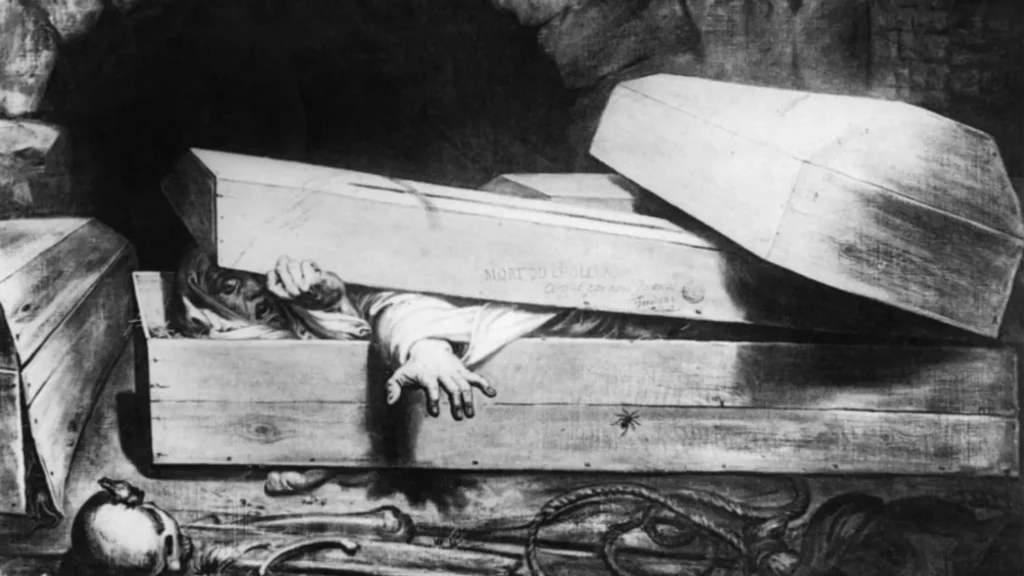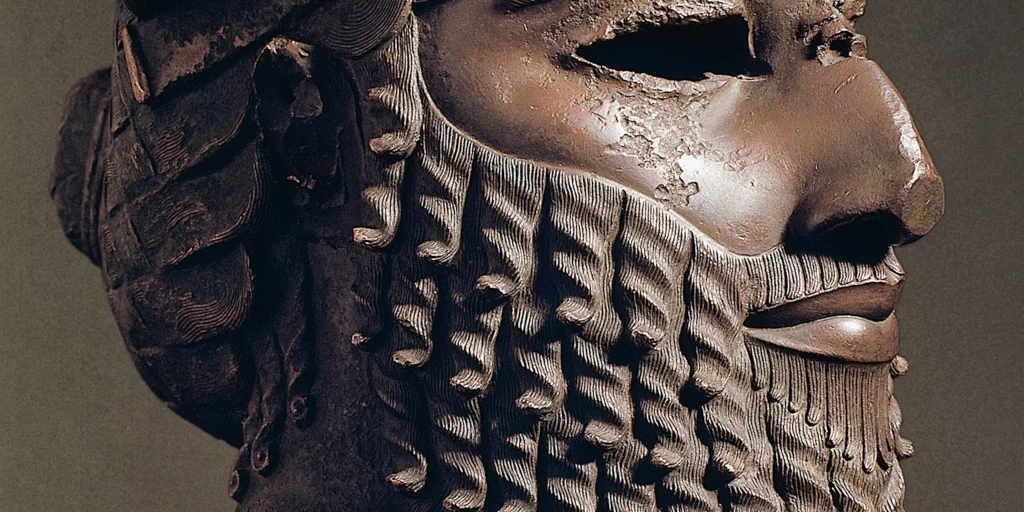It is often said that life and death are two sides of the same coin. As we embrace life, we must also be accepting of death.
But, what happens if someone is accidentally buried alive or mistaken for dead, only to wake up later to find that they were six feet underground? Sounds like the plot of a riveting film, doesn’t it?
But, this is precisely what happened with Essie Dunbar, a South Carolinian woman who was literally buried alive. Keep reading to know about the intriguing life (or should we say death?) of Essie Dunbar.

Essie Dunbar’s “First Death”
In the summer of 1915, a 30-year-old woman named Essie Dunbar in South Carolina suffered an epilepsy attack. She fell to the floor and stopped breathing. Not knowing what to do, her family called for Dr. D.K. Briggs from Blackville to examine her.
Dr. Briggs did the checkup but did not find any signs of life — Essie was neither breathing nor had a pulse. He declared her dead and her family set about making the funeral arrangements.
In those days, funeral preparations were done quickly and the family wanted to bury her without any delay. Essie’s sister, however, was out of town and would only be able to arrive the next morning. So, the grieving family accordingly scheduled Essie’s funeral for the next day to ensure her sister could pay her final respects.
On the day of the funeral, Essie’s body was placed in a wooden coffin. Three preachers led the funeral service, so the service went on longer than usual. Finally, unable to delay the burial any longer despite the sister not having reached yet, Essie Dunbar’s coffin was lowered into the six-foot-deep grave and covered with dirt.
Resurrection From the Dead
Only a few minutes later, Essie’s sister arrived. She wanted to see Essie one last time and pay her respects and requested the ministers to dig up her sister’s coffin. After giving her request a little thought, the preachers agreed and the coffin was brought up.
But, when they unscrewed and opened the coffin lid, everyone was taken aback by the sight that greeted them.
There sat Essie Dunbar — alive and smiling at her sister and everyone around her.
If it wasn’t for her sister’s late arrival, Essie would have been buried alive in her grave.
However, instead of her family and friends hugging her and welcoming her back, what followed was utter chaos. The three preachers fell into the grave in shock and scrambled to get out. Two of them even trampled the third one, who was the shortest, in their efforts to escape, leaving him with three broken ribs.
Other funeral attendees also ran helter-skelter, thinking Essie was a ghost who had returned from the dead.
The story does not end here.
Essie headed back into the town alone and created a stir once again. Despite the fact that her family and friends loved her, they had never seen, nor had expected to see, anything like what was unfolding before their eyes. They were in complete shock and disbelief that lasted for many years after Essie Dunbar’s return from the grave.
Over the course of the next few years, Essie was touted as the woman who beat death, while many others continued to think that she was a zombie or a curse and regarded her with suspicion.
A Long Life
Essie Dunbar lived for another 47 years until she finally passed away on May 22, 1962, at the age of 77. She passed of natural causes and not a seizure, unlike her previous “death.” Essie was also reported to have outlived Dr. Briggs, who had pronounced her dead 40 years ago.
Fact or Fiction?
There are no specific published accounts from that time about the event. However, a 1955 newspaper article carried in the Augusta Chronicle (dated August 25, 1955), mentions the death of Dr. Briggs and how he had wrongly pronounced Essie Dunbar dead in 1915.
Its narration of the accidental burial relied on a second-hand account that was shared 40 years later by a local doctor named Dr. O.D. Hammond. Dr. Hammond had allegedly treated the wounds of the preacher who had been injured due to the strange event.
The article was republished in many newspapers and magazines between the 1950s and the 1980s. It also later served as the reference for Jan Bondeson’s book entitled Buried Alive: The Terrifying History of Our Most Primal Fear.
Published in 2001, Bondeson’s book cites the event of Essie Dunbar’s mistaken burial. It also includes anecdotes from some elders from South Carolina who had heard or attended Essie Dunbar’s funeral ceremony. Bondeson also mentions that Essie became popular in her town in later years.
However, despite such anecdotes, verifying this story remains difficult as it was first recounted almost half a century later. It was also a second-hand account of a local physician who was presumably not even there at the funeral service.
Even Bondeson mentions that Essie’s local popularity may have made other people improve upon the story of her resurrection with further retellings. So, it is hard to ascertain whether Dunbar’s tale is an urban legend or a real event.
Want to learn about other premature burials? Below we will share more such stories of people being buried alive.
Margorie McCall — Lived Once, Buried Twice
Essie Dunbar’s premature burial story is isolated in history. There have been quite a few similar instances of people who were buried alive and “returned” from the dead.
One such person was Margorie McCall. In 1695, Margorie, a woman living in Lurgan, Ireland, caught a fever and was presumed to be dead by her loved ones.
Soon after her “death,” her family held a wake and laid her to rest in Shankill Graveyard in Lurgan. Following the burial service, grave robbers plundered her grave and exhumed her body to steal whatever precious belongings she had. They tried to pry out a valuable ring that was still on her finger, and upon failing, decided to chop her finger off.
As they began to cut off her finger, Marjorie opened her eyes, which frightened them away. She then got up and walked back home to her husband and children. Alleged, she lived for another decade after the ordeal and even had more children.
When Marjorie finally passed, she was buried in the same spot with the words “Margorie McCall — Lived Once, Buried Twice” inscribed on her gravestone.
This story traveled across Europe and became popular across the continent. However, many historians remain doubtful about the truth of Margorie’s story as there is no record of her “second death” in 1705. Meanwhile, others have explained that a famine that was prevalent at the time may have destroyed the local records of that period.
Gruesome Premature Burials
Not all have been as lucky as Essie Dunbar and Margorie McCall coming back alive and getting a second chance at life. Many have also passed within their coffins.
Collins
On January 18, 1886, The New York Times published an article about a girl named Collins who supposedly passed awyd in Woodstock in Ontario, Canada. A few days before the article was published, her body was exhumed to be moved to another resting place. It was then that people discovered that she had been buried alive.
Collins’ shroud was in pieces, one arm was contorted beneath her head, her knees were pulled up to her chin, and her facial features appeared as if she had undergone dreadful torture and agony.
Madame Bobin
On November 16, 1901, The Hereford Times reported about the passing of a pregnant woman named Madame Bobin. She had boarded a steamer from Senegal and seemed to have the symptoms of yellow fever.
Despite being quickly sent to a hospital for people suffering from contagious diseases, Madame Bobin’s health soon worsened and she allegedly passed. Her corpse became stiff quickly, and her skin tone looked grayish. She was buried in a cemetery in Poyak, France.
However, later on, a nurse noticed that the corpse had not become cold yet, and the abdomen muscles also had tremulousness. She immediately informed the authorities about the premature burial. This information was relayed to Madame Bobin’s father who ordered the coffin to be dug up and the body to be exhumed.
He and the others assembled at Madame Bobin’s grave were shocked to discover that she had given birth to a baby in the coffin who, unfortunately, passed with her. An autopsy was conducted to determine the cause of Madame Bobin’s passing. It was found that Madame Bobin did not have yellow fever at all. Instead, she had asphyxiated in the coffin.
Madame Bobin’s father filed a lawsuit against the hospital officials and received £8,000 as compensation.
Wrapping Up
Cases of premature burials have existed since time immemorial. While some of the people mentioned above escaped premature death, many, like Collins and Madame Bobin have also succumbed due to asphyxiation or similar causes.
Fortunately, with advances in medical science and technology, such instances have now become few and far between, although there have been reports of people being buried alive as recently as 2001, 2014, and 2015.

